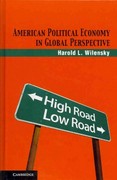Question
The Taylor Principle says that monetary policy ought to respond more than proportionately toincreases in inflation. The New-Keynesian model describes an economy where expectations of
The Taylor Principle says that monetary policy ought to respond more than proportionately toincreases in inflation. The New-Keynesian model describes an economy where expectations of the future influence the current state. Consider the following simplified 3-equation model plus theFisherequation:
=
=+1++
= + + +
= +1
Notice how we dropped the expected output gap from the IS curve (to reduce thedimensionality of the problem) and in Phillips Curve, future inflation has a one-to-one impact oncurrent inflation. We also simplified the central bank reaction function by restricting the rule to onlyrespondtodeviationsof inflation fromtarget inflation. Furthermore,tosimplifythe math/notation,assumethatand =0.
- Show that inflation is explosive if< 1. Can you provide an economic intuition why this isso?
- SubstitutetheFisherequationintheMonetarypolicyrule
- Plug in the monetary policy rule into the IS equation to generate the AggregateDemandequation.
- Introduce the aggregate demand equation into the Aggregate Supply one and solvefor current period inflation. Analyze whether current inflation will converge ordiverge fordifferentparametervaluesofasexpectedfutureinflationchanges.
2. Without engaging in complicated derivations, provide an intuitive response about what youexpecthappens toeconomicactivityandinflationwhenthereisapositiveshock
("bottleneckseverywhere"asmanyanalystsdubbedtheincrease ininflation).
Step by Step Solution
There are 3 Steps involved in it
Step: 1

Get Instant Access to Expert-Tailored Solutions
See step-by-step solutions with expert insights and AI powered tools for academic success
Step: 2

Step: 3

Ace Your Homework with AI
Get the answers you need in no time with our AI-driven, step-by-step assistance
Get Started


